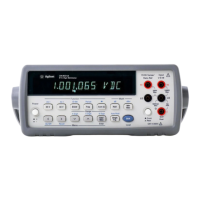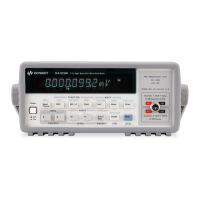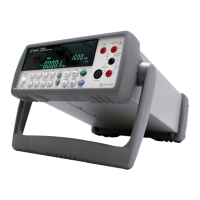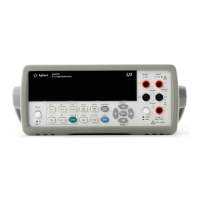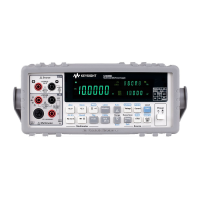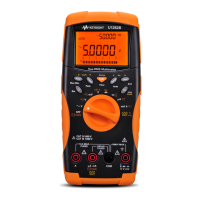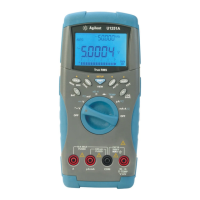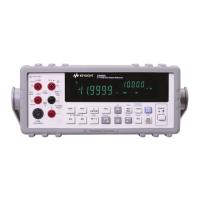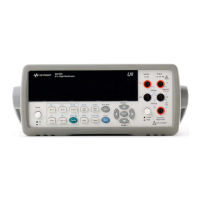48 Chapter 3 Configuring for Measurements
annunciator illuminates.
Reading the Error
Registers
When a hardware error is detected, the multimeter sets a bit in the auxiliary,
error register and also sets bit 0 in the error register.When a programming
error is detected, the multimeter sets a bit in the error register only.
The ERRSTR? command reads each error (one error at a time) and then clears
the corresponding bit. If one or more bits are set in the auxiliary error register,
the ERRSTR? command reads that register first before proceeding to the
error register. The ERRSTR? command returns two responses. The first
response is the decimal: value of the least significant (lowest numbered) set
bit. The second response is a message (string) explaining the error (the
maximum string length returned is 200 characters). After reading a bit, the
ERRSTR? command clears that bit.
The following program uses the ERRSTR? command to read all errors, one
error at a time. After all set bits have been read and cleared, or if there were
no set bits in either register, the ERRSTR? command returns 0, "NO
ERROR".
10 OPTION BASE 1
!COMPUTER ARRAY NUMBERING
STARTS WITH 1
20 DIM A$[200]
!DIMENSION STRING VARIABLE
30 OUTPUT 722; "ERRSTR?"
!READS ERROR MESSAGE
40 ENTER 722; A,A$
!ENTERS NUMERIC INTO A,
STRING INTO A$
50 PRINT A,A$
!PRINTS RESPONSES
60 IF A>0 THEN GOTO 30
!LOOP TO READ EACH ERROR
70 END
The ERR? and AUXERR? commands return the decimal sum of all set bits
in the error register and the auxiliary error register, respectively. Refer to
these commands in Chapter 6 for example programs and listings of the
possible errors.
Calibration The multimeter has two forms of calibration: external calibration and
autocalibration. The external calibration involves a procedure using external
reference sources. Refer to the 3458 Calibration Manual for more
information on the external calibration.
The CALNUM? query command returns a number indicating the number of
times the multimeter has been externally calibrated. By routinely checking
this number, you can monitor the calibrations performed on the multimeter.
The following program reads and returns the present calibration number.
10 OUTPUT 722;"CALNUM?"
20 ENTER 722;A
30 PRINT A
40 END
Autocalibration The multimeter has four autocalibration (autocal) routines: DCV, AC,
OHMS, and ALL. These routines improve short-term accuracy for many or
all measurement functions, but are not substitutes for periodic external
calibration of the multimeter. The measurement functions affected by each
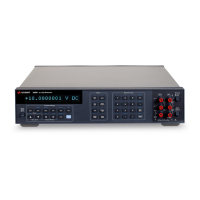
